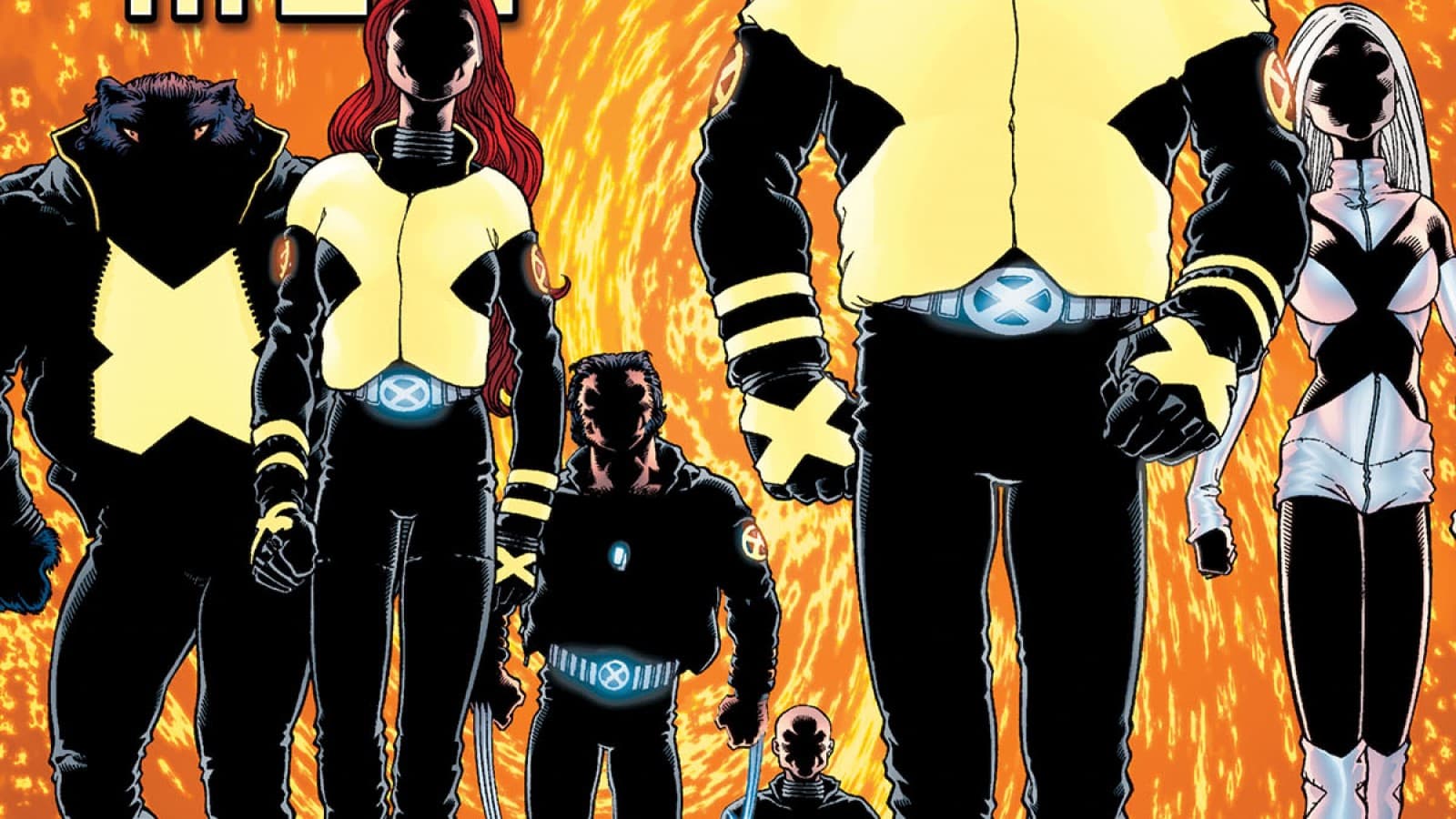Note: This essay, published in 2019, has been updated to reflect that Grant Morrison is commonly referred to by they/them pronouns.
In late 2000, writer Grant Morrison submitted a brief, typed essay to the senior editorial staff at Marvel – the ‘Morrison Manifesto’ – outlining what the X-Men would be under their pen. This manifesto, preserved in the Claremont Papers at the Columbia University Rare Books Library, details a first draft that is remarkably like what was eventually printed, and, moreover, an incisive critique of the X-Men as they stood before Morrison’s run began. This has been reproduced in several collected editions of New X-Men.
In the manifesto, Morrison sets down a remarkably faithful through line that survived into the final product, fundamentally reappraising what, exactly, the X-Men were, and what they stood for. The manifesto also contained a six-month overview of the plot, which survived relatively intact into the final draft. There were, of course, notable differences. Morrison, importantly, intended to have their core cast contain Colossus, who, killed curing the Legacy virus in the intervening period, was replaced with Emma Frost, and Moira MacTaggart, who, also “dead,” had her role as the scientist in the plot replaced by Hank McCoy. A few names, as well, are different. The Sentinel that destroys Genosha is a special Sentinel program called “Herod,” and Cassandra Nova goes by Charlie X, instead. The U-Men are, in this version, called the BLACK KROSS, and have a squad of wacky minibosses – Basilisk, the Creature, Tasmanian, Ernst, and Cellophane – which, of course, did not make it to the final draft. Xorn, as a name, doesn’t even exist, and is instead referred to as either the MAN FROM ROOM X or EXPERIMENT X – but even then, is clearly identified as Magneto.
But it’s Rogue that is perhaps the most interesting element of this version of New X-Men. Even as Morrison was writing their manifesto, the cartoon X-Men: Evolution was on the air, running for four seasons on Kids’ WB. Evolution featured a Rogue radically dissonant from what the comics had – a reclusive, goth-style girl. More culturally important, the X-Men movie, also debuting in 2000, had a similar Rogue, a fearful girl, running away from home. Morrison proposed to follow that depiction, but to adopt it in a rather cataclysmic fashion. Arguing that “the idea that a woman who can’t touch anyone safely would have the self-confident, brash personality of a Southern sexbomb was always unconvincing,” they intended to kill Rogue off entirely and replace her with a new character more in line with the portrayal in the movie and cartoon.

This – clearly – never happened. Chris Claremont, still working at Marvel, was writing his own relaunch of X-Men roughly contemporaneously in X-Treme X-Men, and was on, to say the least, rocky ground. Despite holding a senior editorial position, he was consistently rebuked by the powers that be at Marvel for screaming at staff, and fighting with other editors over his pay rates and the advances on his payment, but, being the writer of nearly two decades of X-Men, still had significant clout. Claremont took Rogue for his X-Treme, saving her, for good or ill, from death at Morrison’s hands.

With Rogue out of the picture, Morrison turned toward Gambit. They planned to rework Rogue and Gambit’s dynamic by flipping it on its head, with Rogue as the desperate lover and Gambit as the one not able to touch his beloved. It was a, to quote a May 2001 email chain between Morrison, Claremont, and Marvel editors Mark Powers and Matt Hicks, “nice new twist on the doomed, romantic mediaevalism of their love.” Gambit would be caught up in the destruction of Genosha by the wild Tri-Sentinel, and his powers, flaring wildly, would transform him into a new “electromagnetic phantom form” to survive. Still able to communicate, but unable to actually interact with the physical world, he’d work with Rogue while she tries to find a cure for his condition.

The idea met with positive reception among Marvel staff, and got to such a point that they were asking artist Frank Quitely to add Gambit in. But again, it was Claremont, who had plans for Gambit in X-Treme X-Men, who vetoed it. It’s interesting to speculate on what might have been if the X-Men were to have lost one of their own in the destruction, but instead, it is simply a footnote for the archives.





